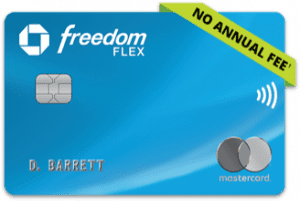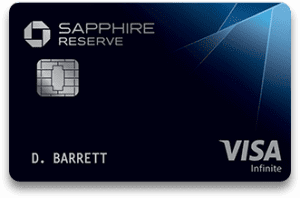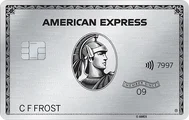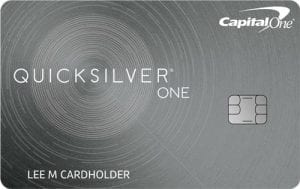Table of Content
Applying for a credit card can be stressful for those people who think that their application might be denied. Luckily, there are some ways to improve your chances of credit card approval considerably.
Even with improved odds, there can be no 100% guarantee that the bank will always approve the application. However, by improving your chances, in most cases, it might be just a question of time before you end up with a decent credit card.
Credit Card Requirements
At this point, the main question is: what are the common requirements for applying for a credit card?
Well, one thing to mention here is that some credit card issuers, such as American Express, Chase, and others do not always list the minimum requirements for each credit card.
However, if we take a look at the Chase website, the list of required documents does include the followinf items, which might give us some insight into how the process works:
- Proof of Income
- Authorization for Credit Card Enquiry
- Checking account information for processing any fees and payments
- Source of regular income
- Good Credit Score
- Active checking account with the balance to cover initial fees
The next step would be to discuss them one by one.
What's Included In Source of Regular Income?
When you fill out your credit card application, you have to fill in the following numbers:
- Your Gross Income
- Your Net Income (After Taxes)
- Your Monthly Income
In addition to that, you have to provide proof of income. For example, if you have an employer who pays your salary to your bank account, then the bank statement showing those payments might be sufficient.
Alternatively, you can show the evidence of rental payments, if you are renting out a property. Banks also accept dividend payments from businesses, child support, pensions, and bonuses as valid sources of income.
This seems fair enough, but how much income do you need to get a credit card? Well, there is no standard minimum amount. However, the banks will take a look at your debt-to-income ratio, also known as DTI.
This indicator shows what percentage of your monthly income is spent on debt repayments. For example, if your monthly income is at $4,000 and your mortgage and car payments total $1,200, then your DTI would be at 30%.
As the Wells Fargo website suggests, most lenders prefer to lend to people who have their DTI ratio at 35% to 36% or lower.
Finally, it is worth noting that banks are typically more lenient when it comes to student credit card applications. Some students had as little as $100 monthly income, but they still got approved for credit cards.
Sign Up for
Our Newsletter
and special member-only perks.
Top Cards Require Good to Excellent Score
It’s not surprising that credit score is one of the most important factors when banks consider credit card applications.
According to the Experian website, one of the major credit bureaus, a good credit score is 670 or better according to FICO and 660 or higher according to Vantage Score.
Now, this does not mean that if your FICO score is lower than 670, all of your credit card applications will automatically be rejected. At the same time, a good credit score does not guarantee a 100% approval rate either.
However, generally speaking, if you have a good credit score, in most cases your credit application will get approved.
Card | Required Score | Rewards | Annual Fee | |
|---|---|---|---|---|
Chase Sapphire Reserve® | Excellent | 1X – 10X
5X total points on air travel and 10X total points on hotels, car rentals and dining when you purchase through Chase Ultimate Rewards®, immediately after earning your $300 annual travel credit. Also, earn 3x points on dining at restaurants and travel (after meeting the $300 travel credit), then 1x points per dollar spent on all other purchases.
| $550 | |
The Platinum Card® from American Express | Excellent | 1X – 5X
5X points on up to $500,000 spent on directly-booked airfare and flights and prepaid hotels booked through American Express Travel (per calendar year), 2X points on prepaid car rentals through American Express Travel and 1X points on all other purchases
| $695 (Rates & Fees) | |
Discover it® Cash Back | Good – Excellent | 1-5%
5% cashback on up to $1,500 in rotating category purchases each quarter when you activate the bonus category (then 1%), as well 1% percent cash back on all other purchases
| $0 | |
 | Chase Freedom Flex℠ Card | Good – Excellent | 1-5%
5% cash back on up to $1,500 in combined purchases on selected categories each quarter and 5% cash back on travel purchased through Chase Ultimate Rewards®. Also, you can earn 3% cash back on dining at restaurants (including takeout and eligible delivery services), drugstore purchases , and 1% on all other purchases
| $0 |
Capital One QuicksilverOne Cash Rewards | Fair | 1.5% – 5%
Unlimited 1.5% cash back on all purchases and unlimited 5% cash back on hotels and rental cars booked through Capital One Travel (terms apply)
| $39 | |
OpenSky® Secured Visa® Credit Card | Poor – Limited | None | $35 |
Active Checking Account to Cover Initial Fees
Some credit cards require an annual fee. There is no one standard rate, the size of the fee depends on the actual credit card, as well as on its rewards and privileges. For example, Blue Cash Preferred card has an annual fee of $95.
6 Simple Ways to Increase Credit Card Approval Odds
At this point, the next logical question is: how can one improve the odds of credit card approval? Well, below there are 6 ideas, which can increase the chances of approval.
Some of them are easier to achieve, while others might take some time. However, if you are doing those things, then this can make it much easier to get a credit card.
1. Pay Down Debt
One of the first ways to improve your chances of credit card approval is to pay down the debt. This includes liabilities such as:
- Mortgage
- Credit cards
- Car loans
- Personal loans
- Student loans
Why is this important? Well, it can make a difference in the approval process. By reducing your outstanding debt, you improve your debt-to-income ratio. As your debt balances decrease, the amount you need to pay off those debts also shrinks.
Even a small improvement in your DTI ratio can have a big impact. For example, if your DTI was previously 40% and then dropped to 35% after paying down some debt, it could strengthen your application.
This might not seem like a significant improvement. Yet, many banks are happy to approve cards for those people whose DTI ratio is lower than 36%.
2. Increase Your Income
Another way to improve your chances of credit card approval is to increase your income. Here again, this will reduce your DTI ratio.
This is because, as your income rises, it takes a smaller portion of your revenue to keep up with monthly repayments.
One possible side benefit to this is that the bank might even decide to offer a higher credit limit on your credit card. This is because, with a larger income, bankers will feel more confident in your ability that you can keep up with your payments.
3. Avoid Late Payments
Building a good payment history is one of the keys to increasing your chances of credit card approval. The fact of the matter is that the past payment history is one of the largest components of the FICO score.
If you have a solid payment history, then the bank might see you as someone who can be trusted with a credit card and someone who can keep up with its debt payments. Consequently, they will be more likely to approve your application.
4. Grow Your Savings and Investments
Keeping large balances in your savings or investment accounts shows banks that you have a strong financial cushion in case something unexpected happens.
While having a stable income is important, it's not always guaranteed. You could lose your job, rental income, dividends, or another source of income for various reasons. Having that safety net can make a difference when things don't go as planned.
Having an emergency fund, savings accounts and investments give you the ability to cover your monthly payments and maintain a decent payment history and credit score in the process. Once things stabilize, you can rebuild those reserves.
5. Lower Your Credit Utilization Ratio
The credit utilization ratio measures the ratio of your balance on all of your credit cards, compared to the total available credit limit. For example, if the balance on your card is $2,000 and the total available credit is $10,000, then your credit utilization ratio is 20%.
To maintain a good credit score, it is important to keep your credit utilization ratio at 30% or lower. On the other hand, having credit cards maxed out can be very damaging to your credit score and lead to your application being denied by the bank.
This chart created with Experian data shows that those with an average to good credit score have an average credit utilization ratio of the optimum 33%. This ratio drops significantly for those with very good and excellent scores.
At the other end of the scale, the chart shows that those with poor credit scores typically have a very high credit utilization ratio, with an average of 73%. This will be a massive factor in lending decisions for those in this group.
6. Avoid Too Many Applications
Chase and some other banks follow the 24/5 rule, as described above because they want to avoid clients who frequently change their credit cards just to take advantage of rewards.
It is no secret that many credit cards offer some type of introductory benefits, such as:
- 0% interest on balances for the first 6 months or some other period
- Some amount of membership points
- Cashback on some purchases
Therefore, what some clients do is to make most of those rewards, before the period expires. After that, they move on to other cards and do the same.
So one way to avoid ending up in this category is to only open up to 4 credit card accounts for any 2 years. This means that on average you can still get one new credit card every 6 months. So this still leaves some room to take advantage of some of those introductory rewards.
Reasons Issuers Deny Your Application
There can be several reasons why credit card issuers might decide to deny your application:
- Poor credit rating – It is not surprising that most banks do not want to give credit cards to people with poor credit ratings. This just adds to their risk exposure.
- Very high DIT ratio – You are also likely to get rejected if your debt-to-income ratio is too high, like 45% or higher. With high DIT, most of your income already goes to service the debt, so this makes it very difficult to keep up with your bills. As a result, from a bank's point of view, you are more likely to default on your debt obligations.
- Insufficient income – If you do not have sufficient income to keep up with monthly credit card payments, then it makes very little sense for the bank to approve the application.
- Too many applications – It is also helpful to remember Chase's 24/5 rule. It states that Chase will not approve a credit card application if the client has opened 5 or more credit card accounts for the last 24 months. As the name suggests this rule is followed by Chase employees. However, other banks might also decide to reject your application on those grounds.
- Late Payments in the past – Finally, if you had a history of late payments in the past, the bank might decide to reject your application. In this case, also, they would consider issuing cards to be too risky.
Sign Up for
Our Newsletter
and special member-only perks.
FAQs
What is pre-approval?
Pre-approval let you apply and check your eligibility for a credit card, without impacting your credit score.
It is important to keep in mind that you still need to apply for the card and there is no 100% guarantee that the application will be approved. However, generally speaking, if the bank sends you a pre-approval offer, then it is likely that you will get approval for the credit card as well.
Why many applications can hurt your score?
New credit inquiries make up 10% of the FICO credit score. When you apply for a credit card you lose points on your credit score. However, the lost points will be returned after around 6 months.
When you apply for several different cards, it can have an even worse impact on your credit score. However, the overall effect is still limited, since this component only makes up 1/10 of credit score.
What credit card would I be approved for?
If you have a good credit score, such as a 670 FICO score or higher, then generally speaking, you are likely to get approval for most cards, including gold, platinum, and other types of rewards credit cards.
However, if you have no credit history or a relatively low credit score, it might make more sense to apply for cards that are designed for people with a low score, or consider applying for a secured card.
How to get approved for a credit card faster?
With most credit cards it might take several business days for the bank to consider your application and give you an answer.
However, there are some instant approval credit cards. In this case, you get a response within minutes after you submit your application. Here it is important to keep in mind that an instant approval card does not guarantee a 100% approval rate, it only insures a quick response from the bank.
Which credit card is approved easily?
Generally speaking, secured credit cards and student credit cards in most cases are approved relatively easily, compared to other credit cards.
Student credit cards typically have low credit limits and represent a less financial risk for the bank. Secured cards are also less risky for banks because the borrowed funds are secured by a security deposit.





